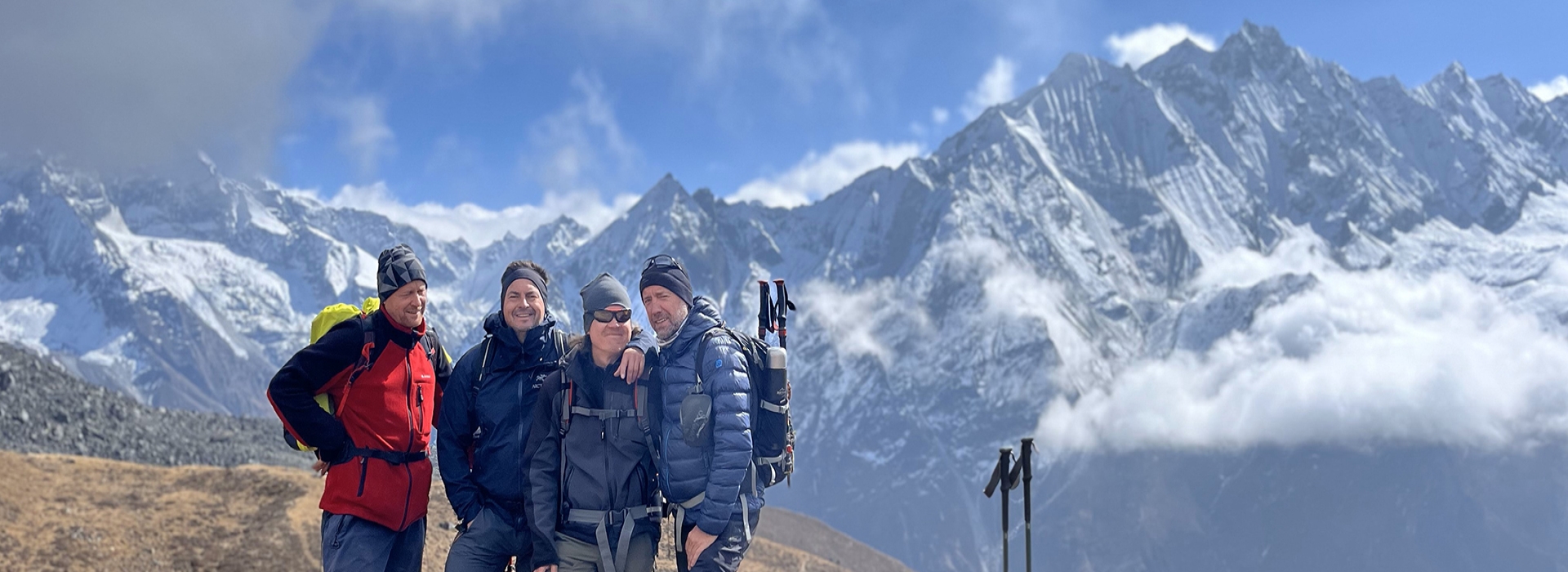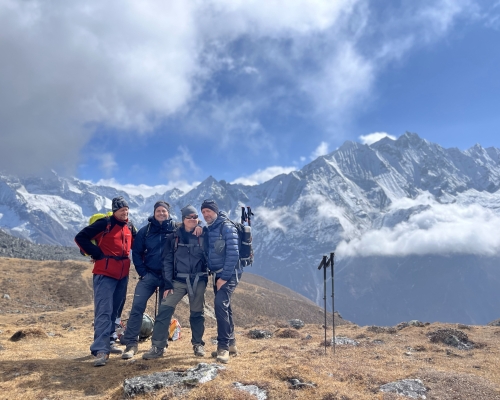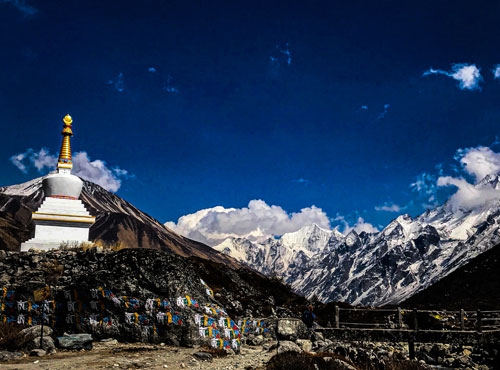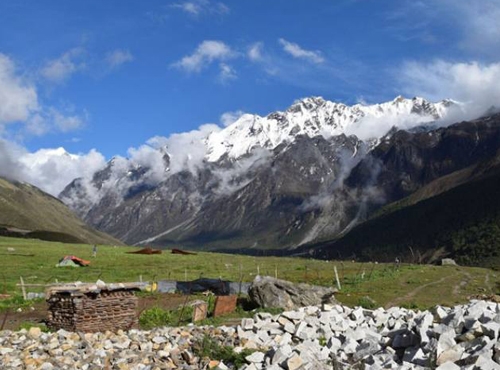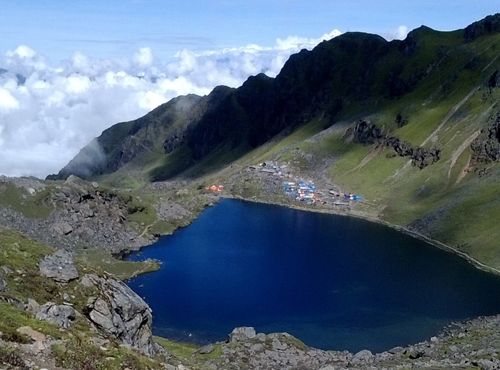Best Time for Yala Peak Climbing
Yala Peak is best climbed in Nepal’s two primary trekking seasons, spring and autumn, when weather conditions are stable, and views are clear:
- Spring (March to May): During spring, trekkers enjoy warmer temperatures, clear skies, and blooming rhododendron forests, adding color to the trails. This season is excellent for spotting wildlife and seeing Langtang Valley’s landscapes in full bloom.
- Autumn (September to November): The autumn season provides crisp air, stunning mountain vistas, and lower humidity levels, making it the most popular time for trekking. Visibility is at its best, allowing climbers to enjoy panoramic views from Yala Peak’s summit.
Avoid trekking in the monsoon season (June to August) due to heavy rainfall, which can make trails slippery and dangerous.
Required Permits for Yala Peak Climbing
For trekking and climbing in the Langtang Valley, the following permits are necessary:
- Langtang National Park Entry Permit: This permit is required to enter Langtang National Park and costs around USD 30. It can be obtained in Kathmandu at the Nepal Tourism Board or through a trekking agency.
- TIMS Card (Trekkers' Information Management System): Costing about USD 20, this card is mandatory for all trekkers and helps authorities keep track of trekkers for safety reasons.
Make sure you carry your permits at all times, as they will be checked at entry points and along the trail. Scenic Nepal Treks will be responsible for all these permits.
Physical Fitness and Training
While Yala Peak is a non-technical climb, it requires a good fitness level and the ability to trek at high altitudes:
- Cardio and Endurance Training: Prepare with cardio exercises like running, hiking, or cycling to build stamina for trekking long distances at a higher altitude.
- Strength Training: Leg-focused exercises, such as squats and lunges, will improve stability and endurance for uphill and downhill trekking.
- Acclimatization Practice: If possible, try trekking at a moderate altitude before the trip to prepare your body for high-altitude conditions. Climbing at a slow pace during the trek and allowing time for rest days will help with acclimatization.
Altitude Sickness and Safety Measures
Altitude sickness, or AMS (Acute Mountain Sickness), can affect trekkers over 3,000m, so understanding the symptoms and prevention is critical:
- Symptoms of AMS: Early signs include headaches, nausea, dizziness, and loss of appetite. If symptoms worsen, immediate descent is recommended to prevent serious complications.
- Preventative Measures: To minimize the risk of altitude sickness, ascend gradually, drink plenty of water, avoid alcohol, and consider taking acetazolamide (Diamox) as a precaution. Trekkers should plan for an extra day or two in the itinerary for acclimatization if needed.
- Emergency Preparations: In case of severe altitude sickness or injury, it’s essential to have high-altitude travel insurance that covers evacuation by helicopter.
Accommodation and Meals
Accommodations along the Yala Peak trail are mainly simple teahouses, which offer basic rooms with shared bathrooms:
- Rooms: Teahouses generally have twin-sharing rooms with blankets, though bringing a warm sleeping bag is recommended.
- Meals: Most teahouses serve a menu of dal bhat (rice and lentil soup), noodles, pasta, and momos. Vegetarian options are widely available, and meals are typically high in carbohydrates to provide energy for trekking.
Hot showers are sometimes available at a small additional cost, and teahouses may also offer charging points for electronics for a fee.
Travel Insurance for Yala Peak Climbing
Adequate travel insurance is a must for Yala Peak climbing, covering high-altitude trekking up to 6,000m, as well as medical evacuation, trip delays, and accidents. Many insurance policies will specify altitude coverage, so confirm that the policy meets the requirements of this trek. In case of an emergency, a helicopter evacuation can be costly without insurance.
Getting to Langtang Valley
The journey to Langtang Valley starts with a drive from Kathmandu to Syabrubesi, a scenic town at the valley’s entrance. The road winds through lush countryside, terraced farmlands, and stunning Himalayan views. From Syabrubesi, trekkers begin their ascent, trekking through quaint villages, dense forests, and alpine meadows, offering stunning views every step of the way.
Cultural Etiquette and Local Traditions
The Tamang and Sherpa communities populate the Langtang Valley, with deep-rooted Tibetan Buddhist traditions:
- Respect Religious Sites: Always walk clockwise around chortens and mani walls (stone structures inscribed with prayers), and refrain from touching prayer wheels unnecessarily.
- Ask Before Photographing Locals: While locals are generally friendly, always ask for permission before taking photos, as a gesture of respect.
- Greeting Locals: A simple “Namaste” with a smile goes a long way in showing respect and goodwill to the community.
Hiring Guides and Porters
For a smoother and safer trek, hiring experienced guides and porters is highly recommended. Guides not only lead the way and provide climbing support but also offer invaluable local knowledge and cultural insights, enriching the overall experience. Porters assist with carrying heavy loads, allowing you to enjoy the trek with less strain. Many trekkers find that hiring local staff also contributes positively to the local economy. Contact us for customize program.
Responsible Trekking Tips
The Langtang region is a protected area, so practicing responsible trekking is essential to preserving its natural beauty:
- Leave No Trace: Carry out all trash, avoid littering, and consider using a reusable water bottle and water purification tablets instead of plastic bottles.
- Stay on the Trail: Stick to marked paths to avoid damaging local vegetation and disturbing wildlife habitats.
- Respect Local Wildlife: Observe wildlife from a distance, do not feed animals, and avoid loud noises that might disturb the natural surroundings.
